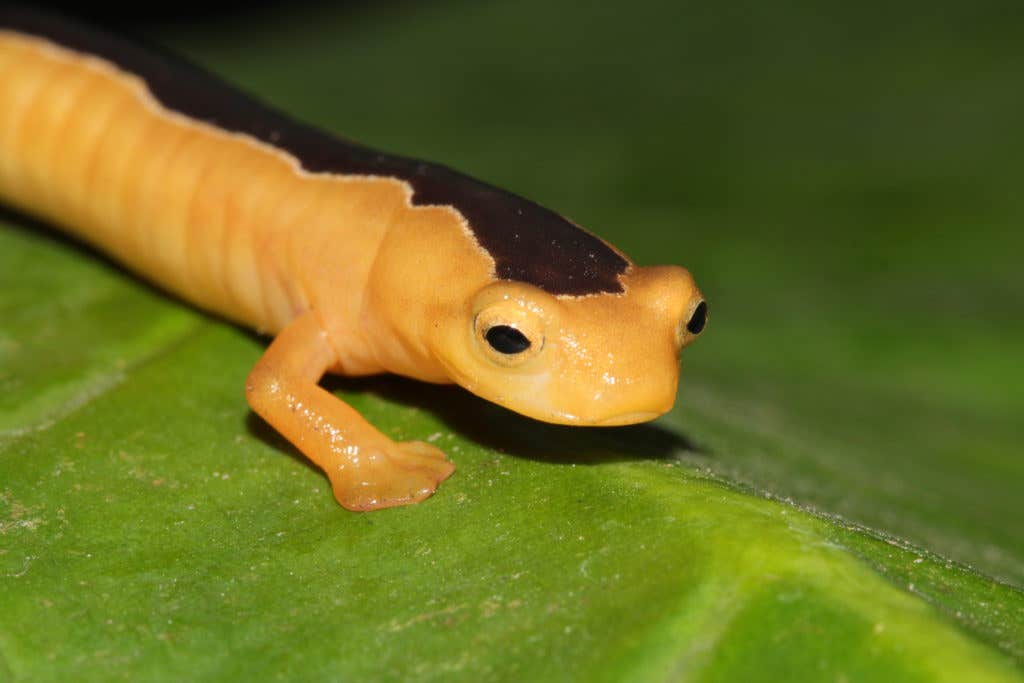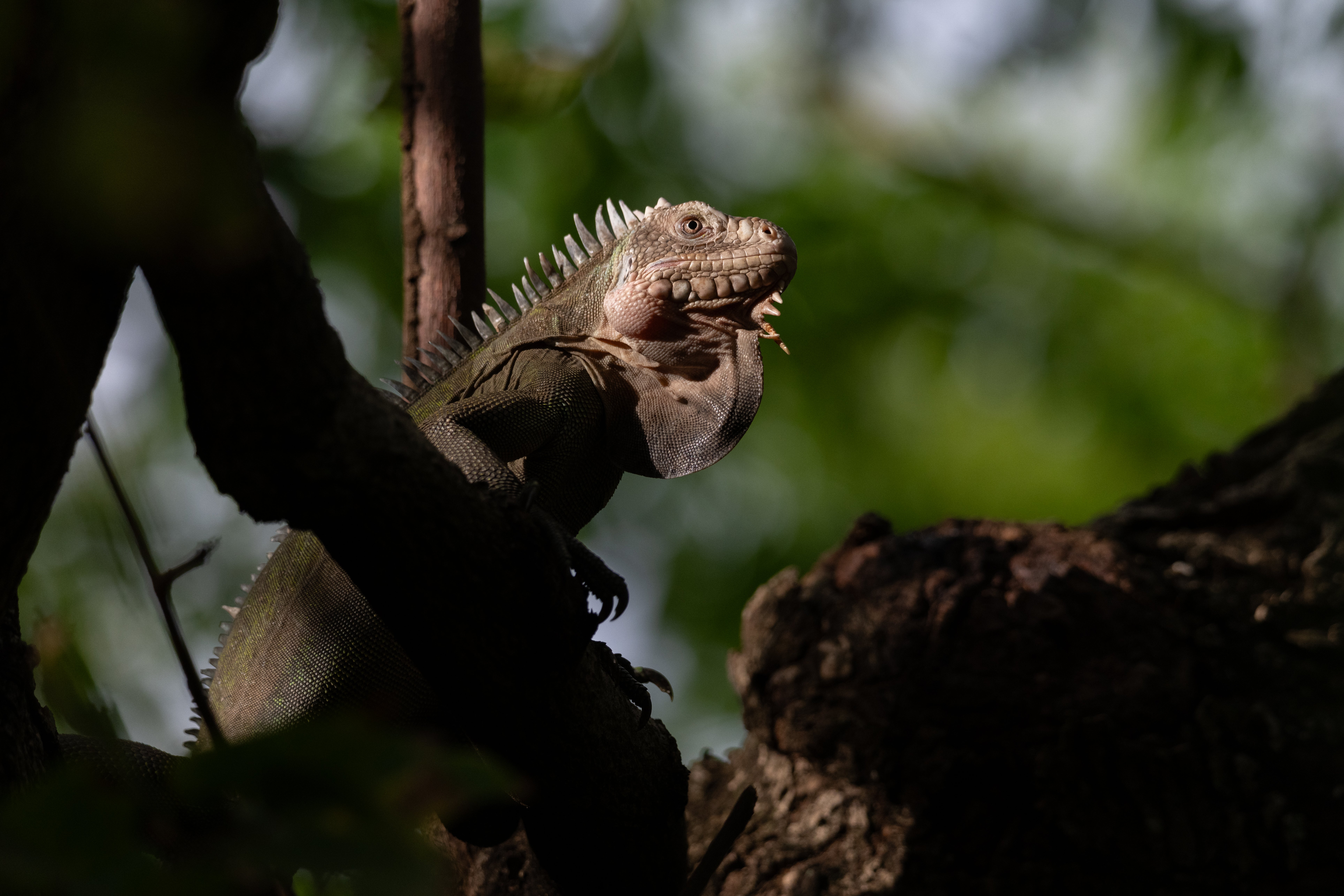Jackson’s Climbing Salamander Rediscovered in Guatemala 42 Years After Last Sighting
 Jackson's Climbing Salamander, photo by: Carlos Vasquez Almazan
Jackson's Climbing Salamander, photo by: Carlos Vasquez Almazan
For immediate release
October 30, 2017
The Search for Lost Species initiative is today celebrating the incredible and unexpected rediscovery of the first of its top 25 “most wanted” lost species, the Jackson’s Climbing Salamander (Bolitoglossa jacksoni), lost to science since its discovery in 1975. The rediscovery comes months before an organized expedition to Guatemala’s Cuchumatanes Mountain range to look for the animal, and was made possible in part because a group of organizations, including Global Wildlife Conservation and Rainforest Trust, established the Finca San Isidro Amphibian Reserve in 2015 to help protect the species’ habitat.
“I love this story because it conveys how protecting habitat gives species a fighting chance to survive on this planet,” said Don Church, president of GWC and Search for Lost Species lead. “This rediscovery can only be a good omen for the future of the Search for Lost Species campaign. It’s a sign that if we get out there and work at it, many of these species can be found and saved.”
A guard at the Finca San Isidro Amphibian Reserve, Ramos León, discovered a juvenile Jackson’s climbing salamander—only the third individual ever seen—on the edge of the reserve while out on patrol this month. He sent a photo to Carlos Vasquez, curator of herpetology at USAC University in Guatemala and coordinator of the amphibian conservation program at local NGO and GWC partner FUNDAECO, who confirmed that the species in the photo was, indeed, the Jackson’s climbing salamander.
Vasquez has been on more than 30 trips to find the species, nicknamed the “golden wonder” for its brilliant yellow hues, since 2005, spending more than 3,000 hours in search of it. Earlier this year he led a workshop for the reserve’s four guards to show them photos of the salamander and to discuss where they may find it—in moss, leaves or bark—while out on patrol in the reserve during the rainy season. His efforts paid off.
“I explained to them how important this species is and I left a poster there so they could see a picture of the Jackson’s climbing salamander every single day,” Vasquez said. “We had started to fear that the species was gone, and now it’s like it has come back from extinction. It’s a beautiful story, and marks a promised future for the conservation of this special region.”
The guard rediscovered the salamander 300 meters higher than where the species was discovered in 1975 by Jeremy Jackson (after whom the salamander is named) and Paul Elias, two American friends who spent time exploring the jungles of Guatemala in the 1970s. On their adventures they also discovered the Finca Chiblac salamander and the long-limbed salamander. All three species went unseen for more than three decades, until Vasquez rediscovered the Finca Chiblac salamander in 2009 and the long-limbed salamander in 2010. The Jackson’s climbing salamander was the last of the missing triad.
In 2015, spurred by the 2014 expedition and the earlier rediscovery of the Finca Chiblac salamander and the long-limbed salamander, a consortium of international groups—GWC, MUSHNAT, FUNDAECO World Land Trust, Rainforest Trust, the International Conservation Fund of Canada and the Amphibian Survival Alliance—established the Finca San Isidro Reserve (also called the Yal Unin Yul Witz Reserve) to protect some of the last remaining habitat for the species.
“When 40 years later [after we discovered the species] as an act of faith, a tract of land next to where we discovered it was protected, we all held our breath hoping that this exceptional phantom would reappear,” said Elias, who today is a partner at a private investment firm in Boston. “The rediscovery of this rarest of the rare shows how important habitat preservation is to the persistence of these special animals in these exceptional places, and for me personally it is a moment of sheer joy.”
Global Wildlife Conservation, FUNDAECO and Rainforest Trust are now joining forces to expand the reserve to protect the Jackson’s climbing salamander and a treasure trove of additional endemic and endangered Guatemalan species threatened by climate change, habitat loss and infectious disease. GWC will be launching a #GivingTuesday fundraising campaign in November to help support the expansion of the reserve.
In the meantime, Vasquez and team are conducting research where the salamander was found to better understand the species’ ecology, and will continue to spend time in the field to look for additional individuals to assess the population.
Additional quotes
Paul Salaman, CEO of Rainforest Trust
“With the Cuchumatanes Range under threat—a well-known epicenter for endangered amphibians and one of the highest global conservation priorities—in 2015 we acted swiftly to support the purchase and protection of critical properties. And we are delighted to report that this important wildlife refuge has permitted the survival and ultimate rediscovery of the spectacular Jackson's climbing salamander.”
Jeremy Jackson
“The night I got the news from Carlos that Bolitoglossa Jacksoni had been rediscovered, I flew off the couch where I’d been falling asleep, let loose a string of expletives (in a good way), and did a little happy dance. I’m more than delighted that Yal Unin Yul Witz exists so that Jacksoni and other wonders can survive and I’m so pleased to hear that it was a guard protecting the preserve who found this beauty. My congratulations and thanks to Carlos and all who have worked to make Yal Unim Yul Witz a reality.”
# # #
Photo: The third individual Jackson’s climbing salamander ever seen. (Photo by Carlos Vasquez Almazan)
The Search for Lost Species
The Search for Lost Species, a Global Wildlife Conservation initiative, is the largest-ever global quest to find and protect species that have not been seen in the wild in decades. collaboration with more than 100 scientists, GWC has compiled a list of 1,200 species of animals and plants that are missing to science. From this list, GWC has teased the top 25 “most wanted” species in the world. Quirky, charismatic and elusive, these species are global flagships for conservation. Learn more at www.lostspecies.org/
Global Wildlife Conservation
Austin-based Global Wildlife Conservation envisions a thriving Earth where all life flourishes. GWC conserves the diversity of life on Earth by preserving wildlands, restoring wildlife and engaging with global guardians. Driven by science, GWC maximizes its impact through conservation solutions in research and exploration, land purchase and protected area establishment, protected area management, poaching prevention, and capacity building. Learn more at www.globalwildlife.org
Contact
Lindsay Renick Mayer
Global Wildlife Conservation
512-686-6225
Lindsay is the Director of Media Relations for Re:wild and has a particular interest in leveraging communications to inspire conservation action. Lindsay is passionate about species-based conservation and finding compelling ways to tell stories that demonstrate the value of all of the planet’s critters, big and microscopic.




